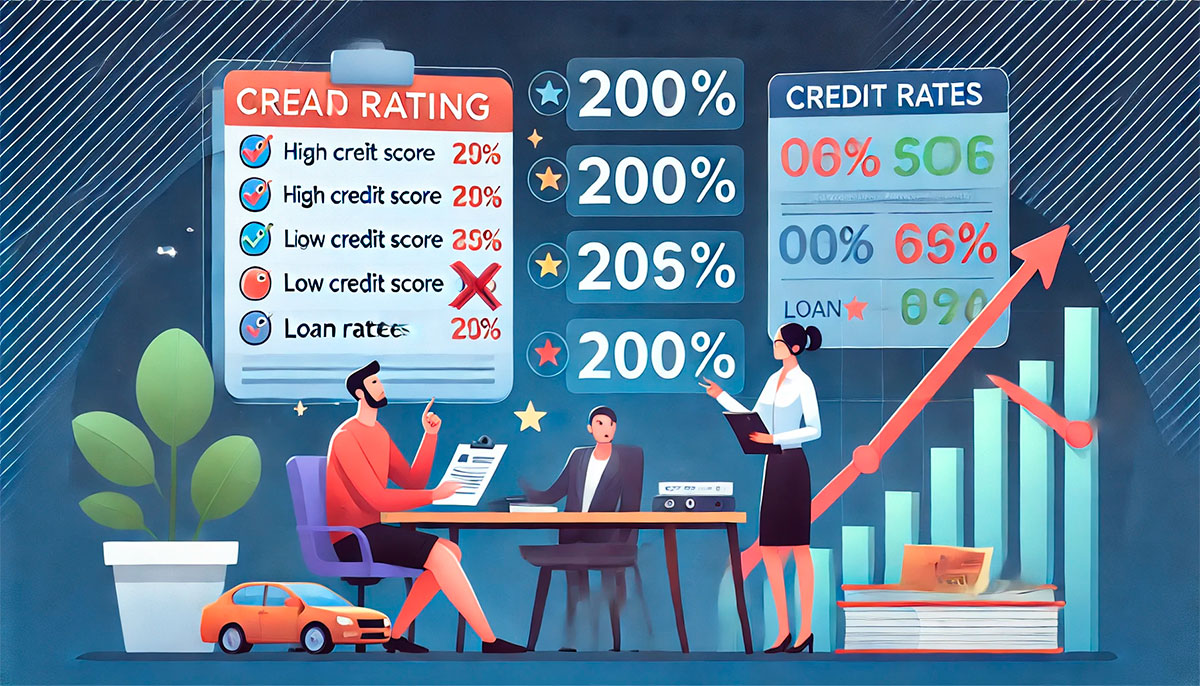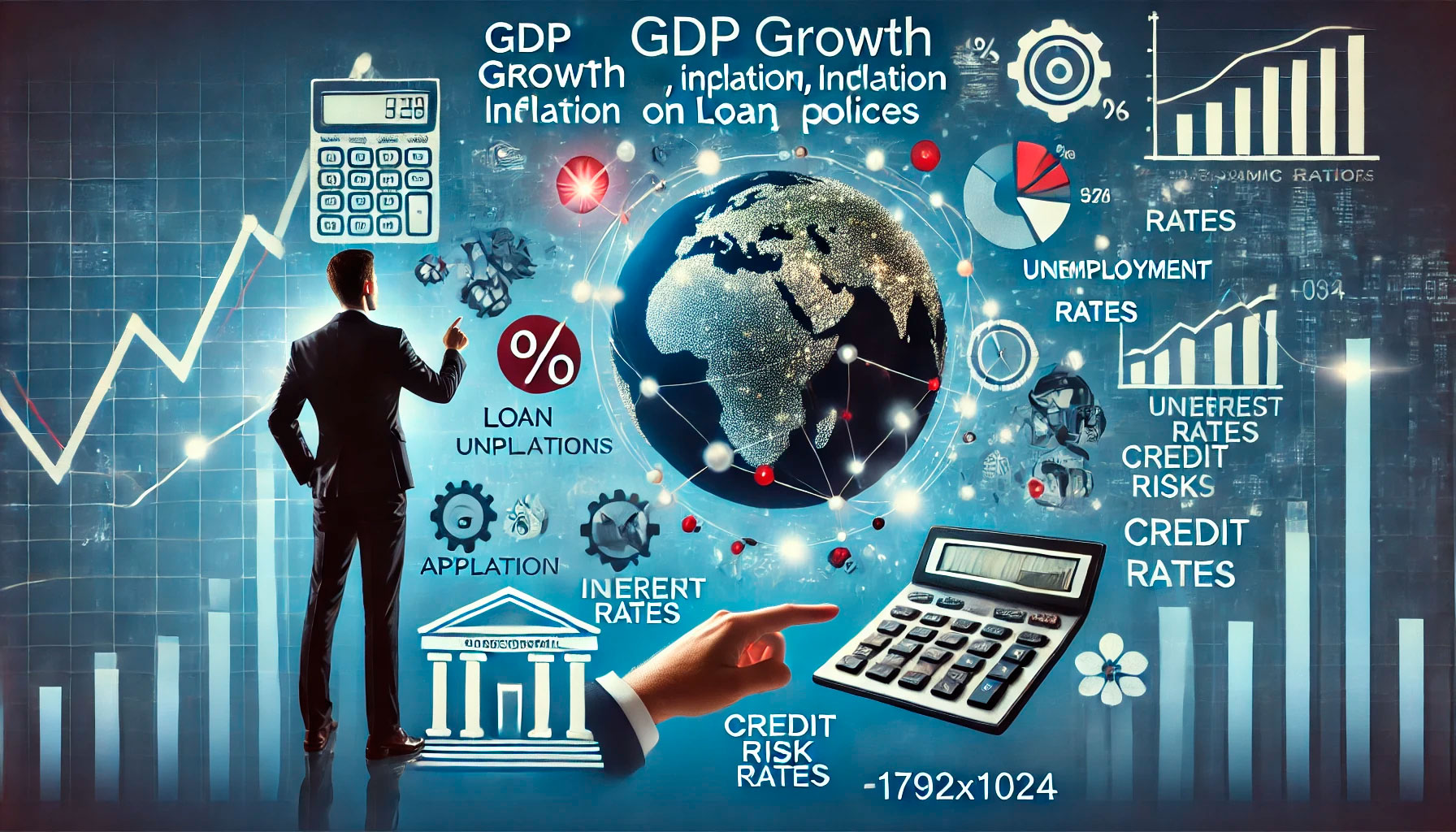Macroeconomic indicators play a significant role in shaping lending policies adopted by banks and other financial institutions. These indicators, which measure the overall economic health of a country, provide valuable insights into the broader economic environment and influence how financial institutions make decisions regarding interest rates, loan availability, and credit risk management. By assessing the state of the economy, banks adjust their lending policies to align with prevailing economic conditions, ensuring that they minimize risk while still providing credit to individuals, businesses, and other borrowers. In this article, we will explore how key macroeconomic indicators shape lending policies, the relationship between economic conditions and borrowing practices, and how borrowers can understand these factors when applying for loans.
Understanding Macroeconomic Indicators
Macroeconomic indicators are statistics that reflect the overall economic performance of a country or region. These indicators help policymakers, businesses, and financial institutions evaluate the state of the economy and make informed decisions. Some of the most important macroeconomic indicators include GDP growth, inflation rates, unemployment rates, consumer confidence, and interest rates. These factors collectively influence lending policies, as they provide a snapshot of economic health and help banks assess the risks and opportunities in the lending market.
Each of these indicators plays a unique role in determining the lending environment. For example, GDP growth signals the overall health of an economy, inflation measures the purchasing power of currency, and interest rates determine the cost of borrowing. Understanding how these indicators interact and affect one another is crucial for both financial institutions and borrowers alike.
The Role of GDP Growth in Lending Policies
Gross Domestic Product (GDP) growth is one of the most widely used macroeconomic indicators. GDP measures the total value of goods and services produced in a country, and its growth or contraction indicates the direction of the economy. When GDP is growing, it suggests that the economy is expanding, businesses are thriving, and consumers are spending more. In this environment, banks tend to have greater confidence in the ability of borrowers to repay loans, leading to more favorable lending policies. With a healthy and growing economy, banks are more willing to offer loans to both consumers and businesses at lower interest rates, as the risk of default is perceived to be lower.
In contrast, during periods of economic contraction or slow GDP growth, banks become more cautious with their lending practices. They may raise interest rates, tighten credit requirements, or reduce the amount of credit available in response to concerns about borrower defaults. When GDP growth is low or negative, unemployment typically rises, and consumer and business confidence falls, making it harder for individuals and companies to repay loans. In such situations, banks may focus on lending to borrowers with strong credit histories and stable incomes, and they may impose stricter terms on loans, such as higher interest rates or shorter repayment periods, to offset the increased risk of default.
Inflation and Its Impact on Lending Policies
Inflation is another key macroeconomic indicator that influences lending policies. Inflation refers to the rate at which the general level of prices for goods and services rises, eroding the purchasing power of money. When inflation is high, the value of money decreases, leading to increased costs for borrowers. In this environment, banks may adjust their lending policies by raising interest rates to maintain their profit margins and compensate for the reduced value of money over time. Higher interest rates also act as a deterrent to borrowing, which helps control inflation by reducing demand for credit and spending in the economy.
On the other hand, during periods of low inflation or deflation, banks may lower interest rates to encourage borrowing and stimulate economic activity. Low inflation signals a stable economy, which provides banks with more confidence in lending to individuals and businesses. In such conditions, borrowing becomes more attractive, as lower interest rates reduce the overall cost of loans. For borrowers, low inflation and low interest rates often mean more affordable access to credit, making it easier to finance major purchases like homes or cars, or to secure business loans for expansion.

Unemployment Rates and Credit Risk
Unemployment rates are a critical indicator of economic health, as they reflect the number of people who are out of work but actively seeking employment. High unemployment is generally associated with economic downturns, and it can have a significant impact on lending policies. When unemployment is high, consumer confidence typically declines, as people are uncertain about their financial futures. As a result, borrowers are less likely to take on new debt, and lenders become more cautious in approving loans. High unemployment also means that banks are more likely to encounter loan defaults, as individuals with unstable or low incomes may struggle to make loan repayments.
In response to high unemployment rates, banks may tighten their lending criteria, focusing on borrowers with stable jobs, higher credit scores, and sufficient income to make loan payments. Interest rates may rise to reflect the increased risk associated with lending in an uncertain economic environment. In contrast, low unemployment rates signal a healthy economy with strong consumer confidence. During periods of low unemployment, banks are more likely to offer loans to a broader range of borrowers, as the risk of default is perceived to be lower. Lower unemployment also increases the demand for loans, as individuals feel more secure in their financial situations and are more likely to take on credit to finance large purchases or investments.
Interest Rates Set by Central Banks
Interest rates set by central banks, such as the Federal Reserve in the United States or the European Central Bank in the Eurozone, have a significant impact on the cost of borrowing and, consequently, on lending policies. Central banks adjust interest rates to control inflation, stabilize the economy, and promote economic growth. When central banks raise interest rates, borrowing becomes more expensive for both consumers and businesses. This typically results in higher loan rates for mortgages, personal loans, and business loans. As borrowing costs rise, the demand for credit decreases, and banks may scale back their lending activities to manage risk and preserve liquidity.
Conversely, when central banks lower interest rates, borrowing becomes more affordable, as the cost of credit decreases. This often leads to an increase in demand for loans, as consumers and businesses take advantage of lower rates to finance purchases or investments. In such periods, banks are more willing to lend money, and lending policies become more favorable, with lower interest rates and more accessible loan terms. Central bank interest rate policies are one of the most influential factors in shaping lending policies, as they affect the overall cost of credit and the availability of loans throughout the economy.
The Role of Consumer Confidence
Consumer confidence is a psychological indicator that measures how optimistic or pessimistic consumers feel about the economy and their financial prospects. High levels of consumer confidence typically signal a strong economy, with people feeling secure in their jobs and finances. When consumer confidence is high, people are more likely to borrow money to finance purchases or investments, leading banks to adopt more lenient lending policies. In such conditions, banks are more willing to approve loans and offer favorable terms, as the likelihood of loan repayment is seen as higher.
On the other hand, low consumer confidence, often associated with periods of economic uncertainty or crisis, can lead to reduced borrowing activity. When consumers are worried about their financial futures, they are less likely to take on debt, and lenders respond by tightening credit conditions. Banks may raise interest rates, reduce loan amounts, or impose stricter eligibility criteria to minimize exposure to risk during times of low consumer confidence. In these situations, the demand for credit declines, and banks may limit lending to only the most creditworthy borrowers.
How Macroeconomic Indicators Influence Lending Policy Adjustments
In response to changing macroeconomic conditions, banks frequently adjust their lending policies to reflect new economic realities. For example, during periods of high inflation or rising interest rates, banks may increase lending rates, tighten credit requirements, and reduce the number of loans they approve. These adjustments are intended to protect the bank’s financial health by ensuring that the risk of default remains manageable and that profitability is maintained in the face of economic uncertainty.
Similarly, when macroeconomic indicators such as GDP growth, low inflation, and low unemployment signal a strong economy, banks may loosen lending policies, lower interest rates, and increase credit availability to stimulate borrowing and investment. By responding to macroeconomic changes, banks help to stabilize the financial system and provide credit that supports economic growth, while simultaneously managing risk and ensuring that lending activities remain sustainable.
Macroeconomic indicators play a central role in shaping the lending policies adopted by banks and other financial institutions. By monitoring factors such as GDP growth, inflation, unemployment, and central bank interest rates, banks can assess economic conditions and adjust their lending practices accordingly. Borrowers, in turn, must understand how these indicators affect the lending landscape, as they directly impact the cost and availability of credit. By staying informed about macroeconomic trends and how they influence lending decisions, both borrowers and financial institutions can make better decisions and manage credit risk more effectively.



